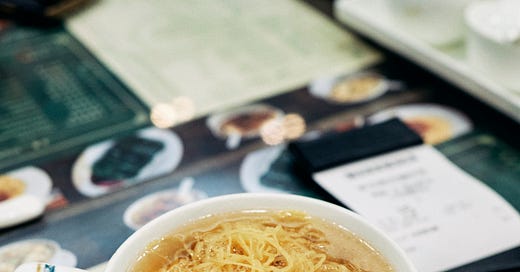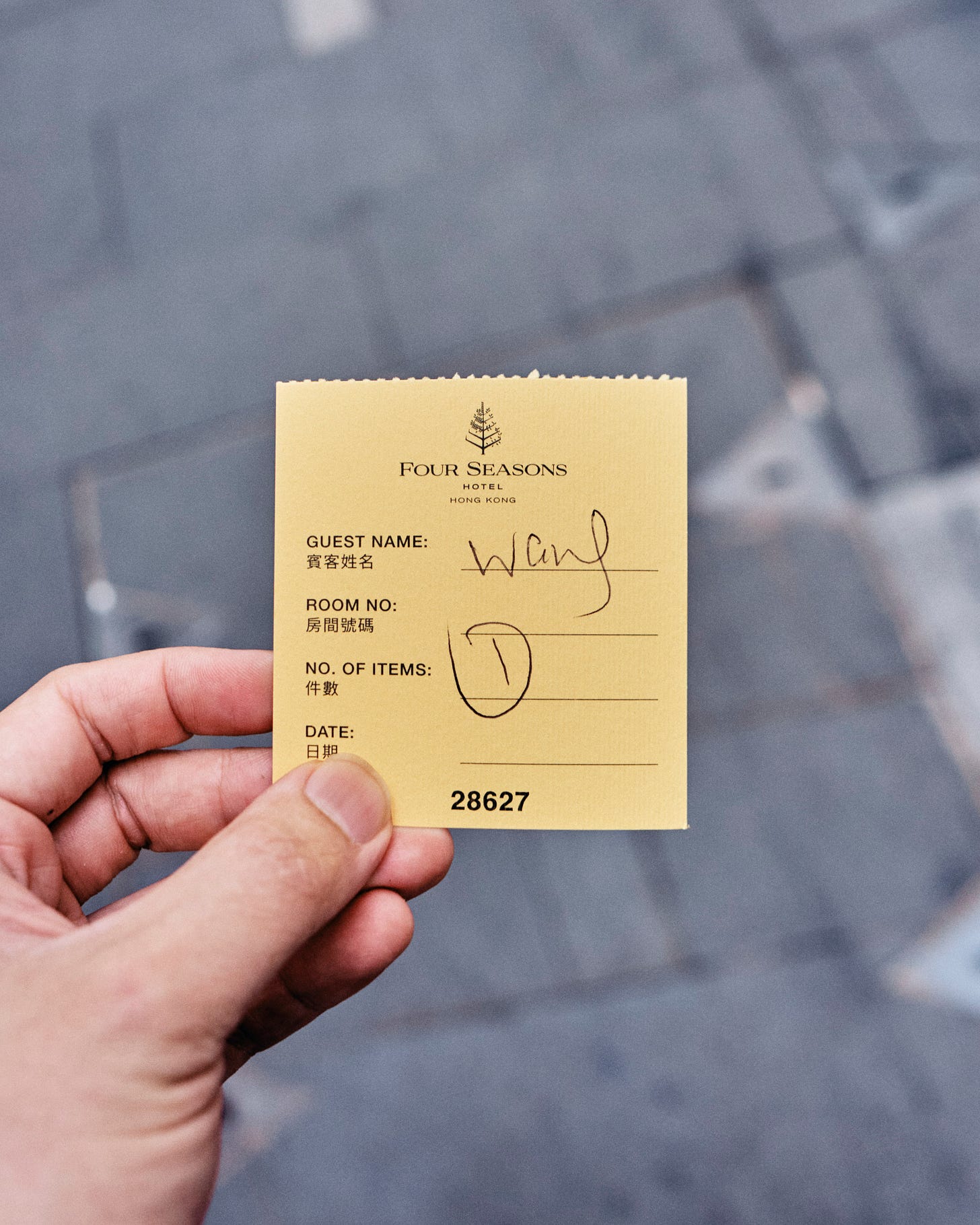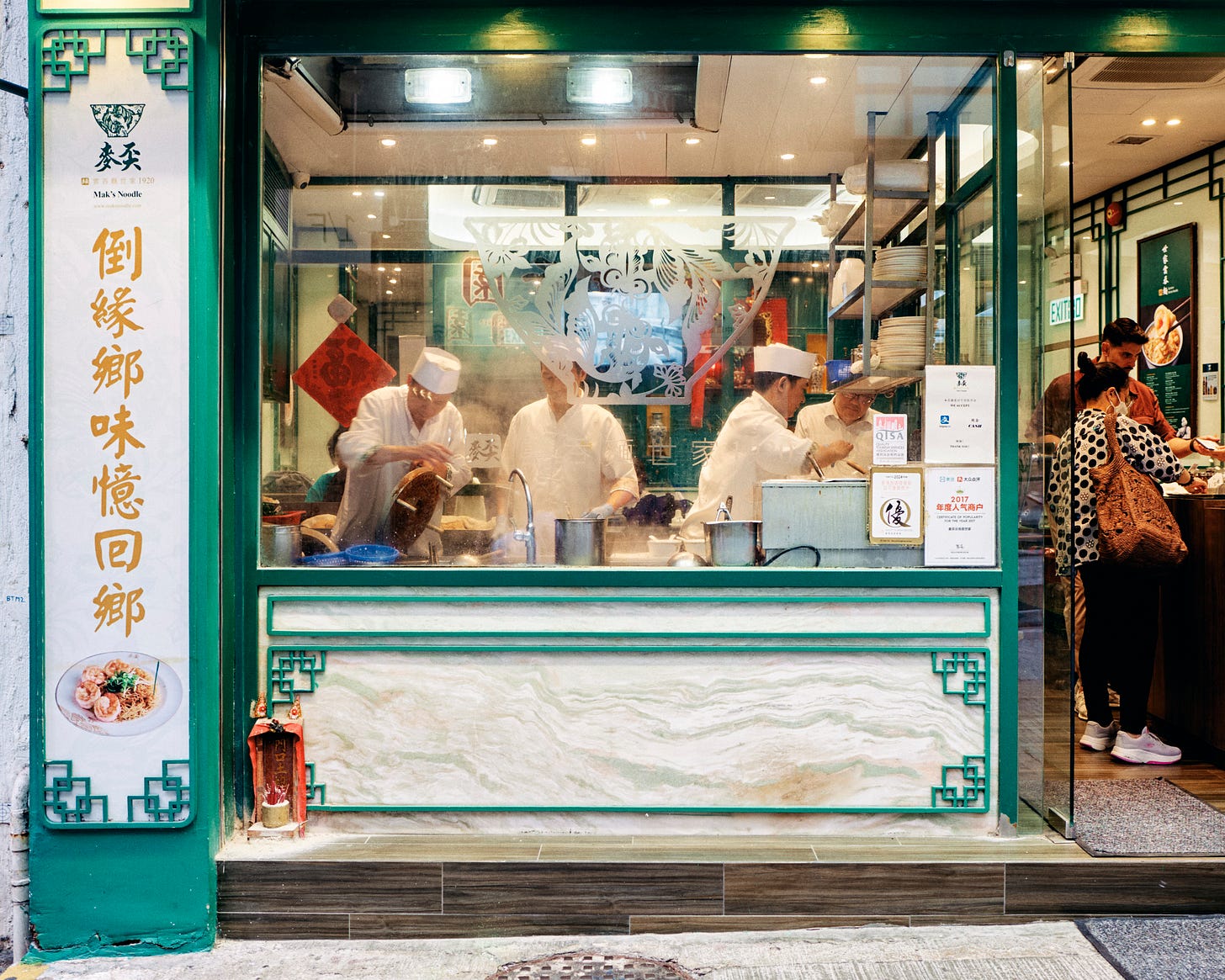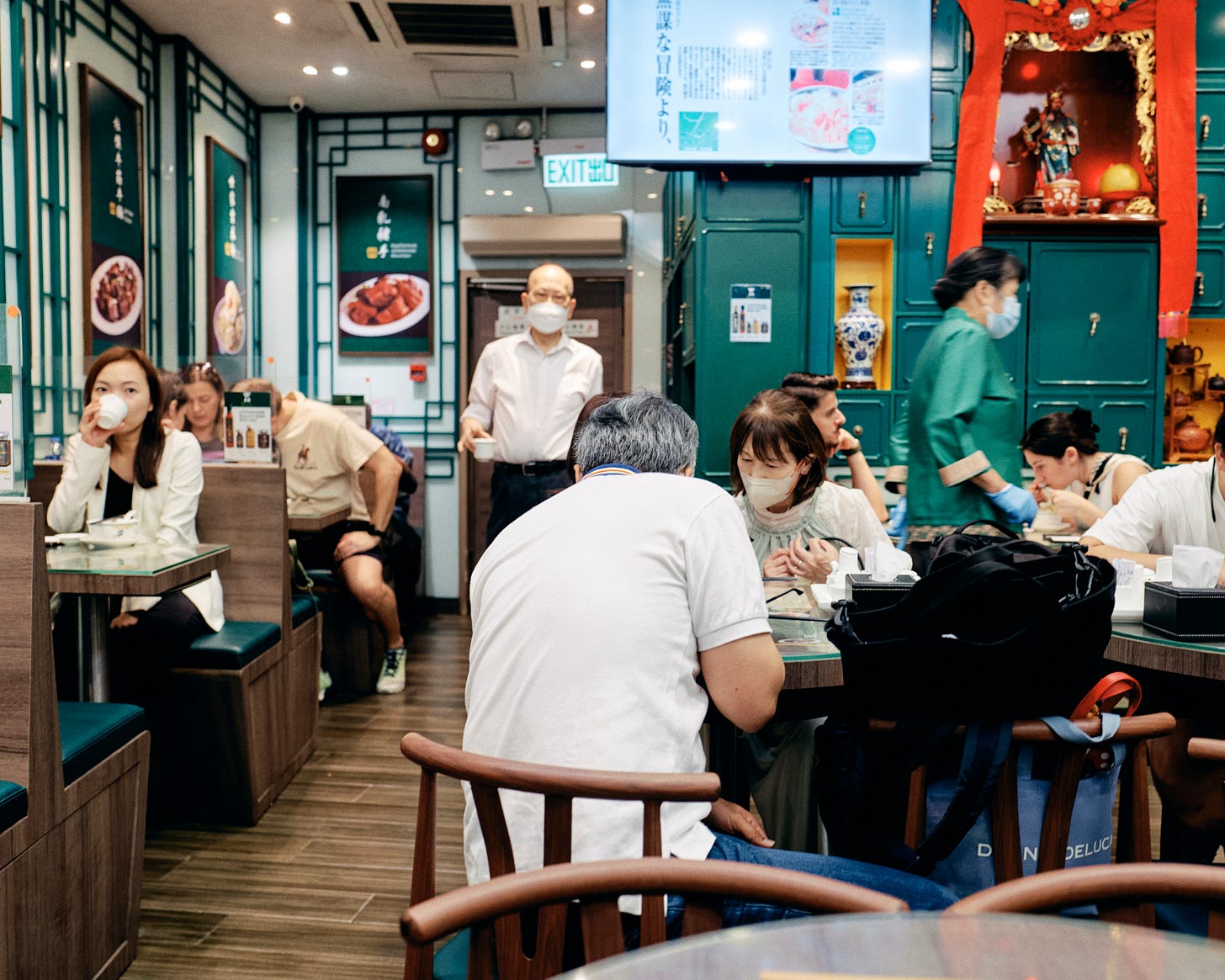One Man's Trash is Another Man's Reappropriation.
My last day in Hong Kong, my global managing director friend showed me a couple of tricks.
One, if you’re flying with Cathay Pacific, you could check your luggage early from the Central train station before you board the airport express.
But there’s still a carry-on, I need to store it in a locker or something.
He took me to the lobby of a five-star hotel, some guy just took my bag, and gave me a slip. They didn’t ask for my reservation details, no booking number.
“The concierge and reception are unrelated,” he turned to me. “Just say you’re checking in later. Besides, they don’t care.”
I loved everything about it. If it’s my Melbourne or Japanese friend, they’d walk me to the locker and wave good luck. My friend here made sure my backpack had the best treatment in Hong Kong.
It’s like pulling a heist. My kind of heist.
“What are you going to do now?” He asked as I walked him to his building.
I don’t know, a foot massage, maybe.
“I know a place, I’ll text you,” he said.
“Also, try Mak’s wonton noodles.”
I turned into Wellington Street, saw a long queue, and automatically assumed it was Mak’s, but it was Tsim Chai Kee. Their wall was plastered with Michelin stickers.
Mak’s directly opposite, no queue, but three sifus working hard.
I looked back at Tsim Chai Kee, realised the queue was mostly foreigners, and remembered my friend mentioning Michelin in Hong Kong is no different to a bribe party. Seeing that he had been looking out for my interest the whole day, and the Michelin guide had not, I walked into Mak’s.
Cantopop quiz, hot shot:
How many wontons are there in a standard bowl of wonton noodles? And why is the standard bowl of wonton called 细蓉, and small in size?
Why do they plate it with noodles on top, followed by the spoon, then wontons at the bottom?
What is the golden ratio of prawn, lean mince, and fat mince in a single wonton? What is the garnish called?
What is the difference between Chinese ‘wonton’ 馄饨 and Cantonese ‘wonton’ 雲吞?
What is the core ingredient, the source of umami in making the soup?
Didn’t expect a real quiz, did you?
For each question you get 20 points. When I was sitting in Mak’s, sharing a table with a guy, before I came home and googled online, my score was a big fat 0%
Meanwhile, I could tell you the difference between a latte, flat white, cappucino, long black, short mac and magic. Tsukemen, tori paitan, champon, gyokai I know, bugatini, rigatoni, parpadelle I know, but not why the surname ‘Mak’ is important to the history of wonton noodles in Hong Kong.
Harvard, you’re not Cantonese, it’s ok.
Well I’m not Italian, Melburnian, or Japanese either.
That’s the shame I have to bear.
The current dire state of modern food culture.
Chinese is about relationships, harmony, and as famous Chinese celebrity Van Diesel would say: family.
Yeah right.
Only if you’re poor and have no choice but to stick together.
Once you’ve ‘made’ it, once grand daddy passes away, it’s all about lawsuits, inheritance, betrayal, control, tactical sabotage, and payback.
If you follow Korean, Japanese, Hong Kong dramas, you’d know.
If you are a lawyer dealing with family law, you’d know.

Here’s another writing tip: when all else fails, just write about the war.
Mr Mak Woon Chee, already with his eight branches of shops fled Guang Zhou during the Japanese occupation, bringing his family and recipes to Hong Kong.
And then after World War II, Chinese flee to Japan to make noodles.
Now Ippudo and Ajisen are opening branches back in China.
Without war, conflict and migration, we would not have ramen, or wonton noodles, or Dainty Sichuan in Australia.
At 50 HKD (AUD$10) a bowl, Mak’s Noodles was priced like a gentrified coffee in any major cities. But it baffles me how and why people are queing up for franchise ramen in Hong Kong, when they have this.
Wontons with silky thin skin, made fresh (I hope) with prawns, thin springy al dente noodles made with real eggs, stock simmered with pork bones, dried shrimps and scallops at a low heat for 4 hours… the cost and process are equally if not more tiresome than ramen.
They even serve you a cup of Chinese tea.
I polished my bowl of 细蓉.
Now I understand why I’m always reserved when tasting clear soup 中華そば in Japan, because it’s not made like this. It’s supposed to be simple and clean, and I feel like the Japanese soy tare, the konbu, made it too much. I would take a bowl of Mak’s over Tora Shokudo anyday.
Defitely my highlight of Hong Kong, after the hike.
The small size was perfect - enough for me to look for egg tarts and iced milk tea later.
The fact that I tasted my first (and possibly last) bowl of ‘proper’ Wonton noodles in 2024, made me a little sad.
If you’re of a Chinese descendant, forget the Great Wall, look for Wonton Noodles. Doesn’t have to be Mak’s, any wonton noodles, just to connect with some branch of Chinese history.
The reason people feel it’s fine to reappropriate our culture, is because we do not appear to respect or cherish them to start with.
Look at the Mak family, they are broken, but they are still making noodles. Or was it the other way? They had such strong opitions on noodles, that they’d split and make their own.
Maybe it was all money.
My point is, no foreigner is reappropriating Cantonese Wonton Noodles.

Now, answers for me sugar daddies:
芙蓉如面柳如眉,对此如何不泪垂?
Her face like a hibiscus, her brows like willows — how can one not be moved to tears by such beauty?
Written in 806 AD by Bai Ju-Yi (白居易), The Song of Everlasting Regret (長恨歌) is among the most popular poems from the Tang Dynasty, depicting the story of Emperor Tang XuanZong and his concubine Yang Guifei during the Anshi rebellion.
Keep reading with a 7-day free trial
Subscribe to Soy Sauce, Sugar, Mirin to keep reading this post and get 7 days of free access to the full post archives.







